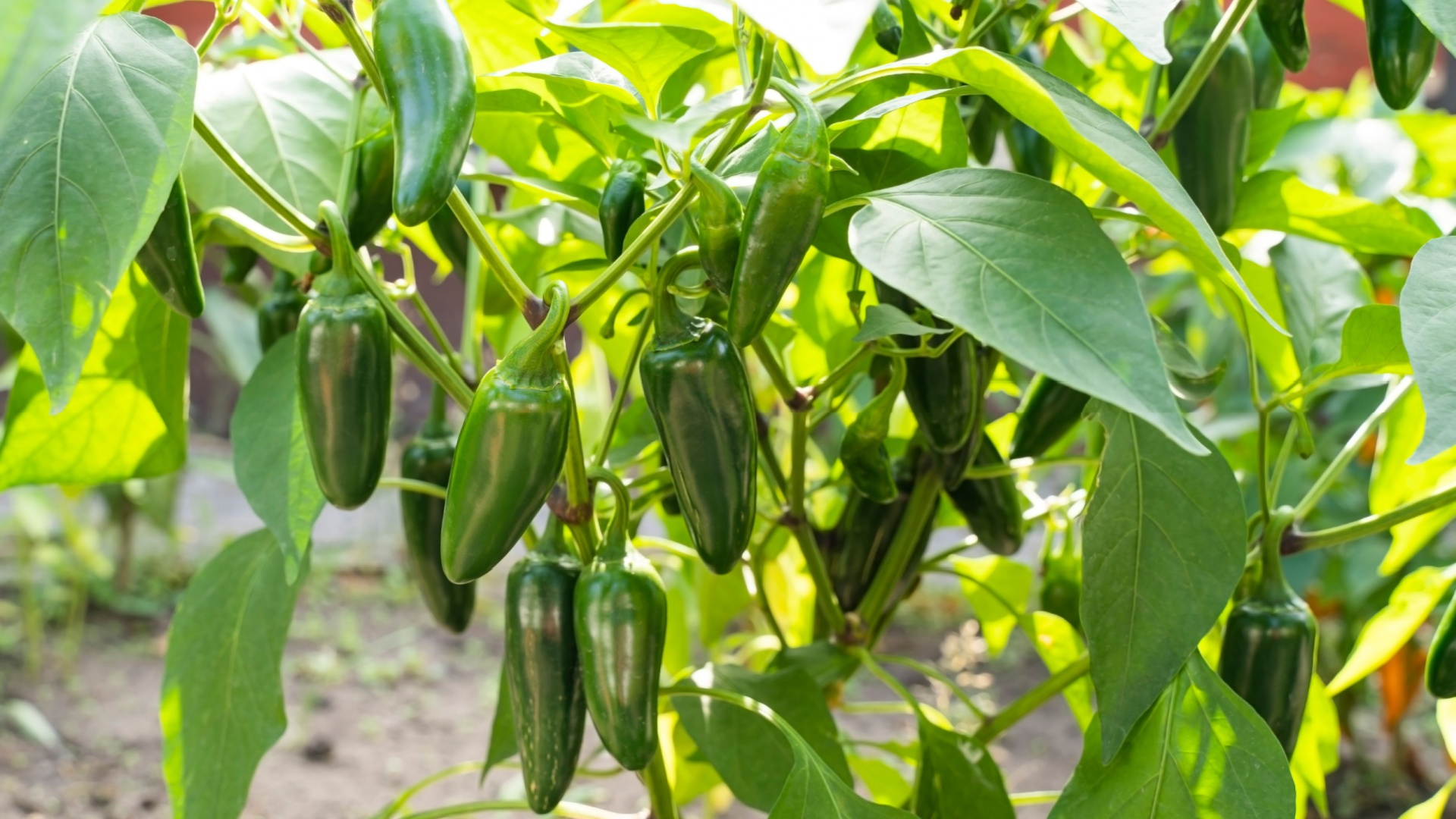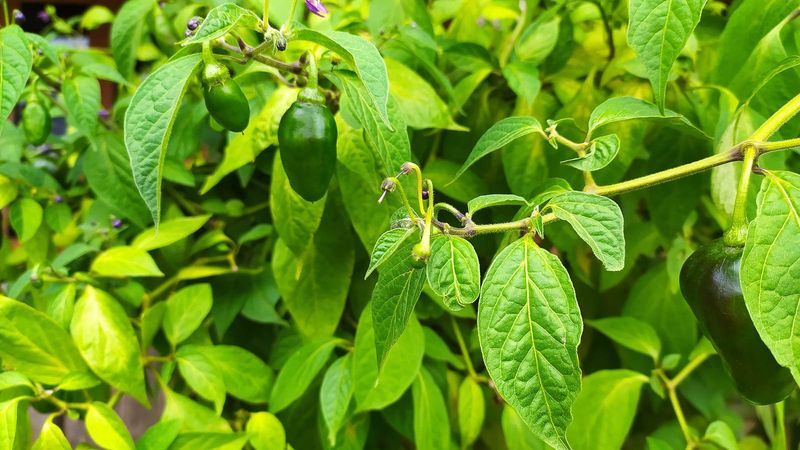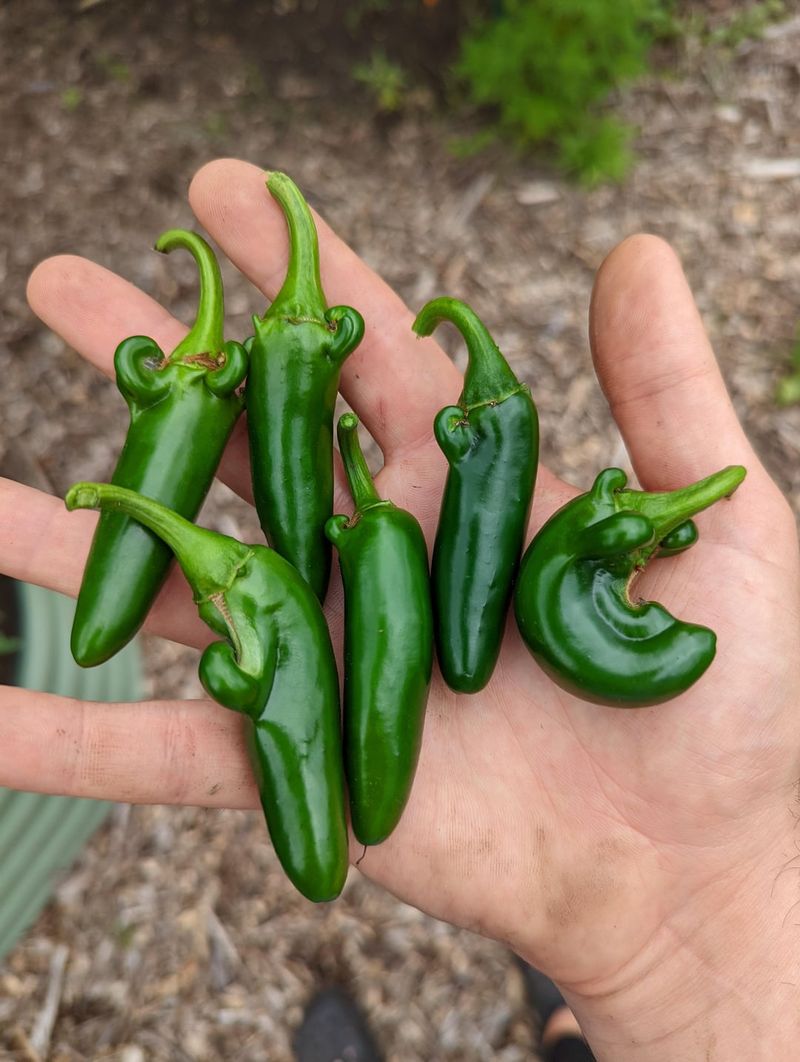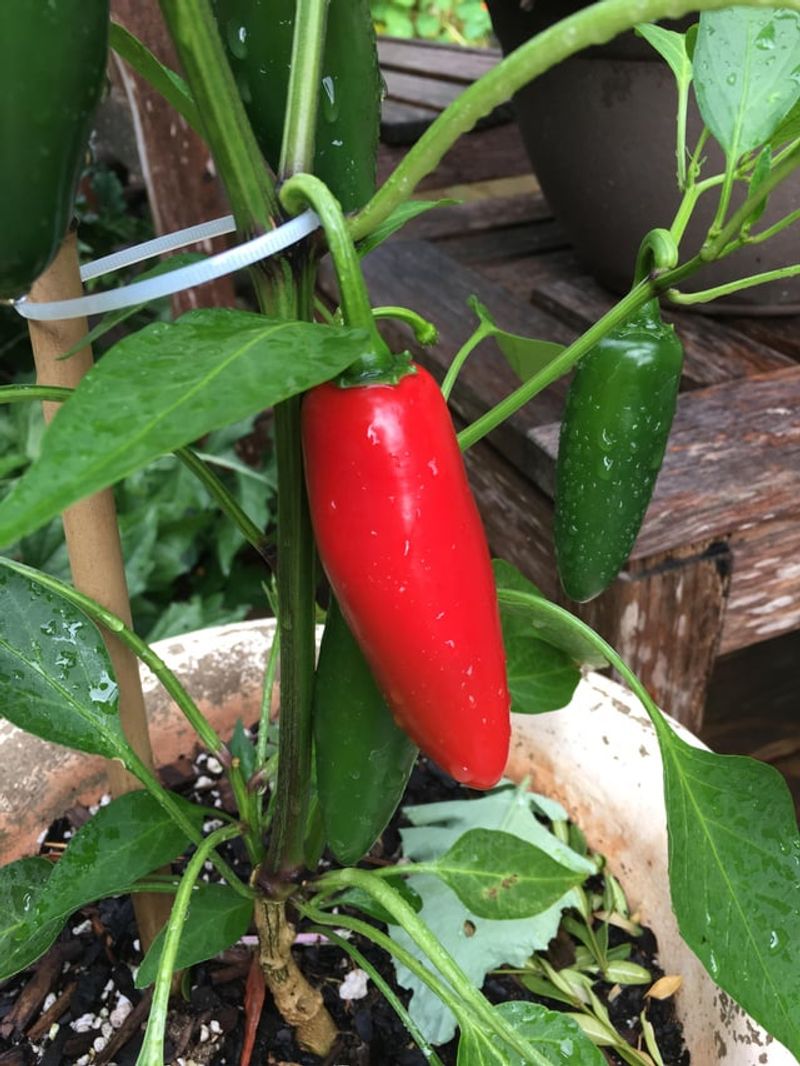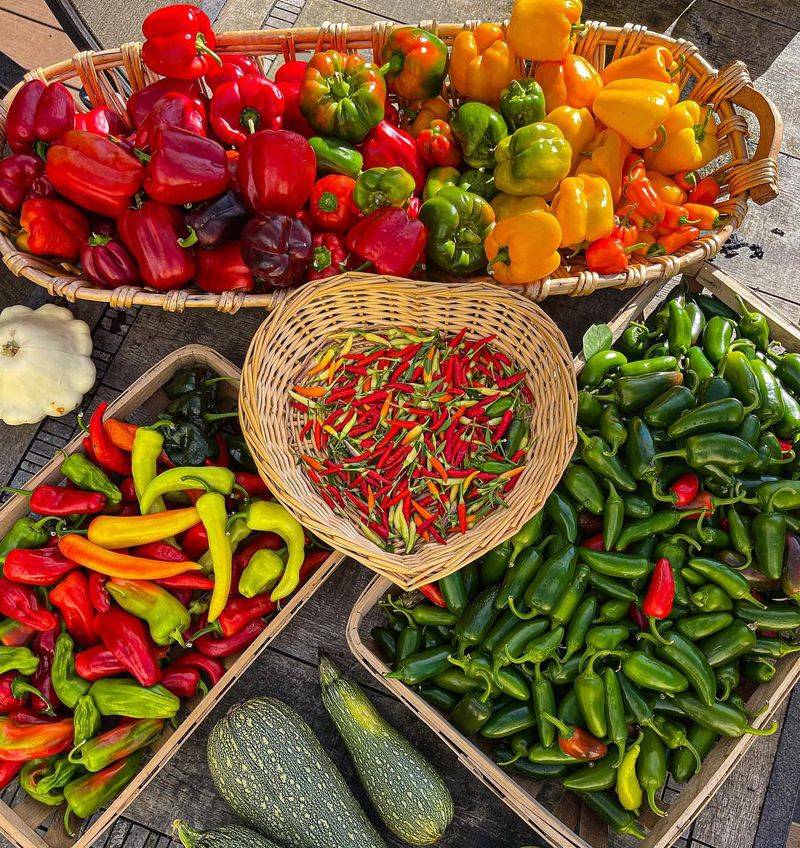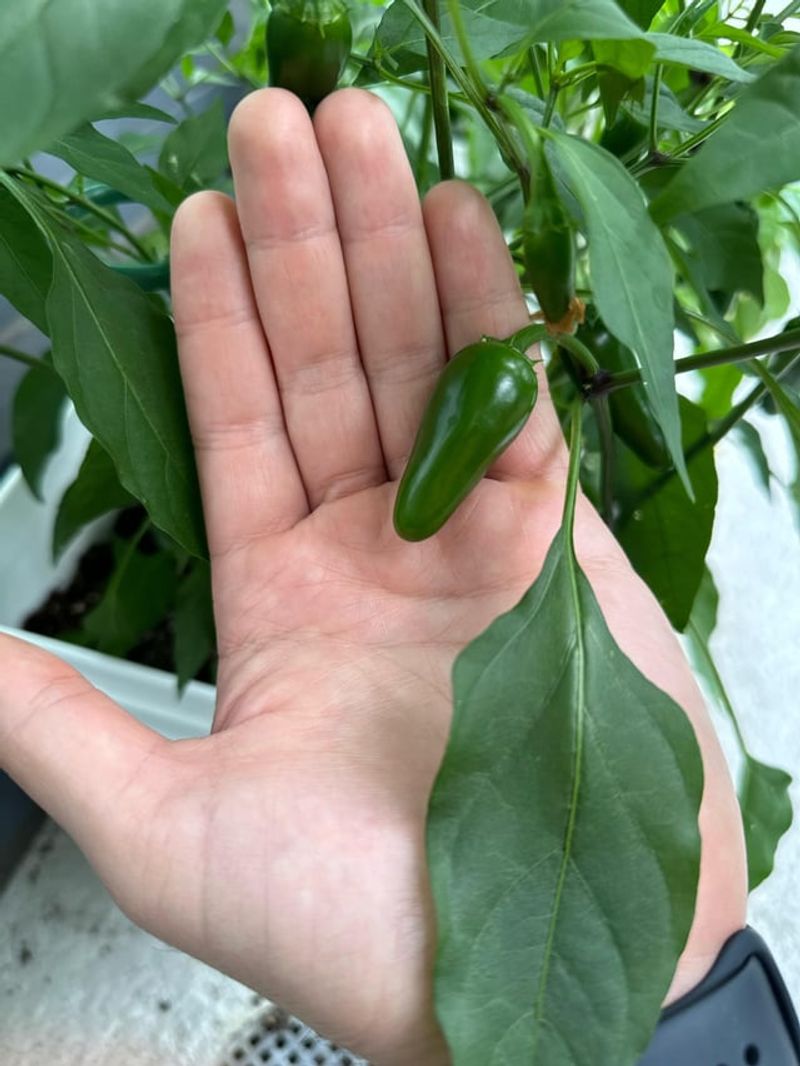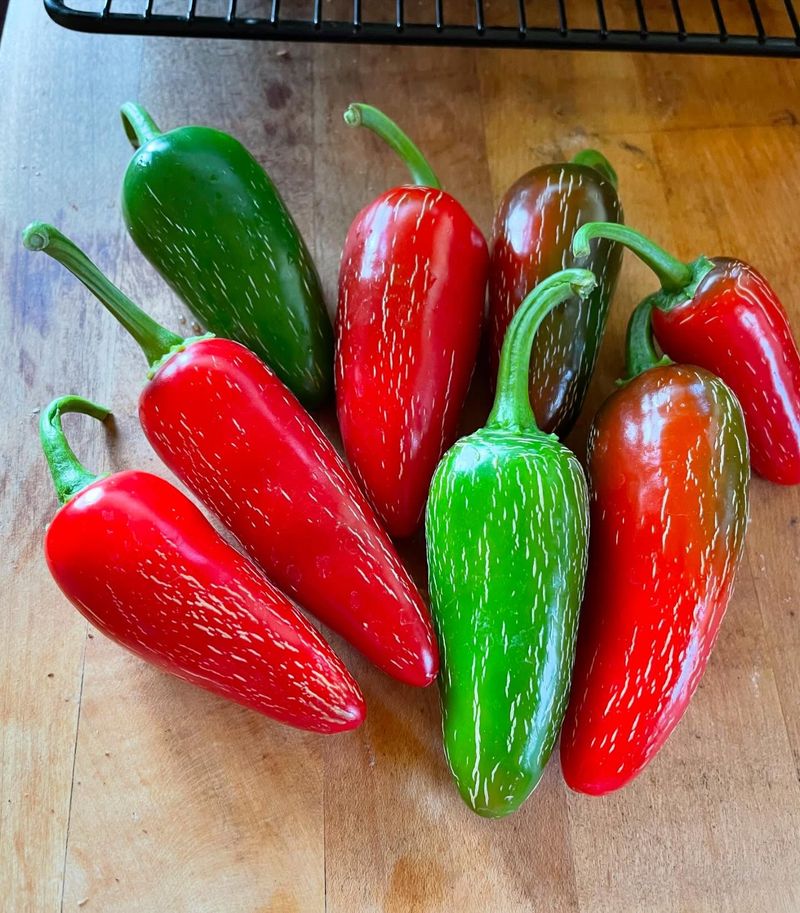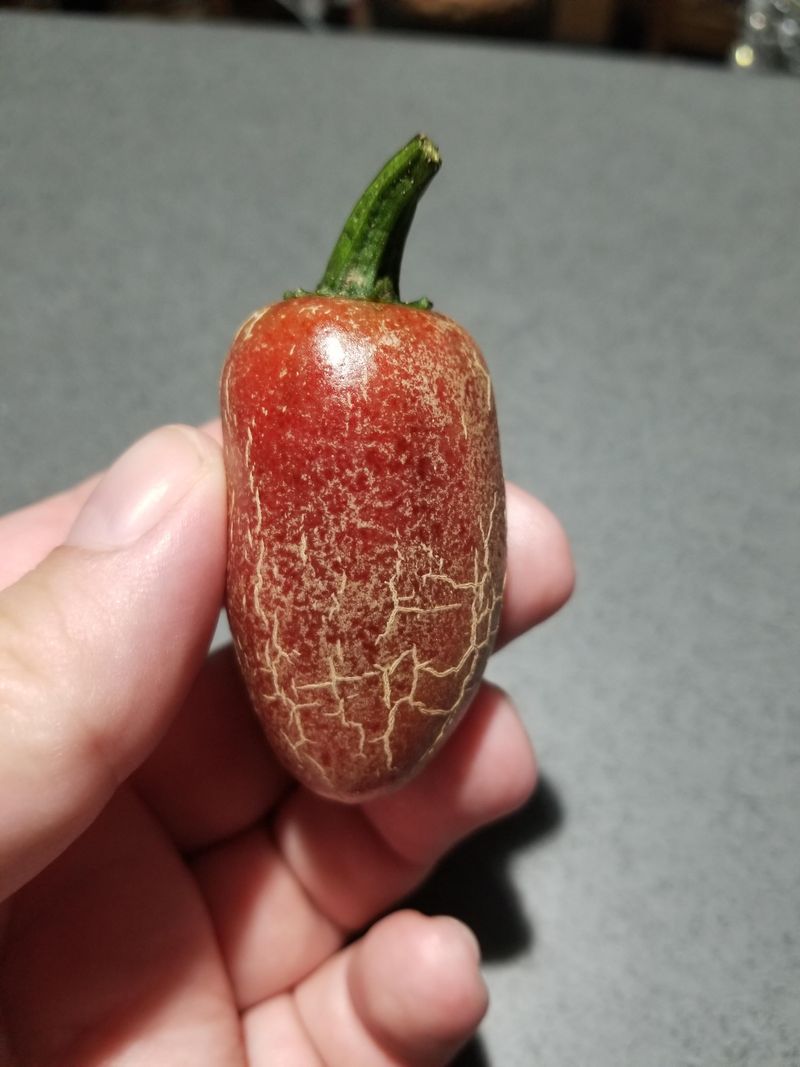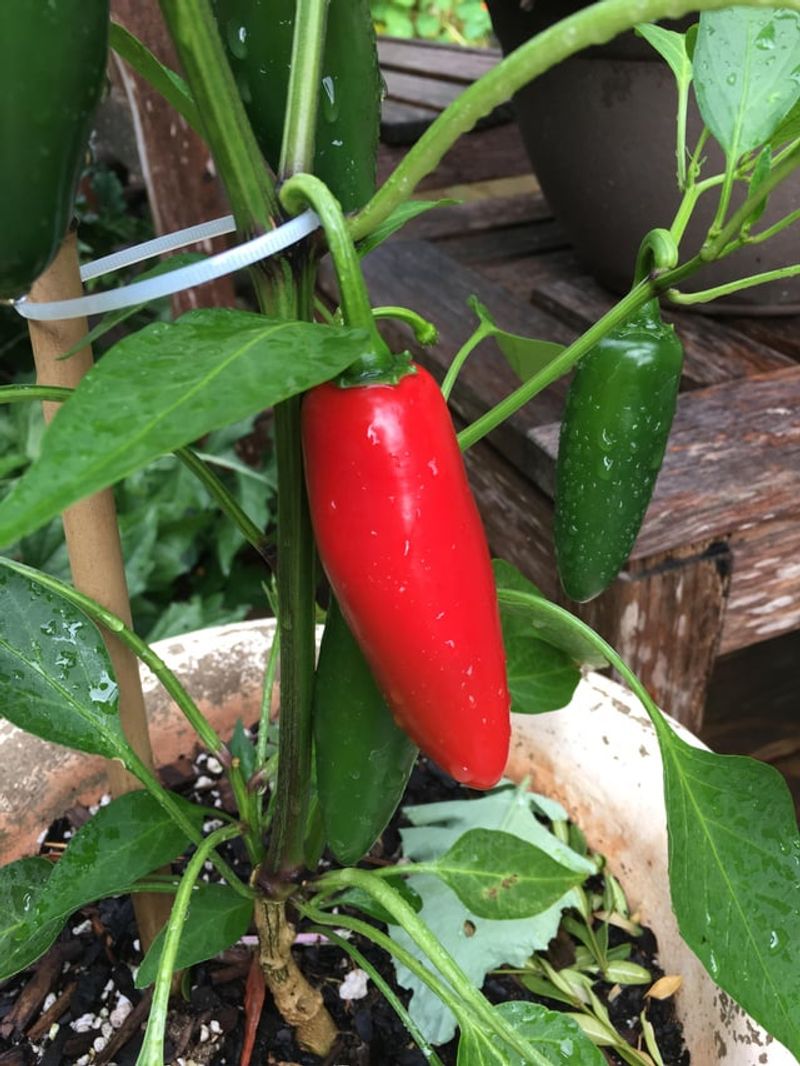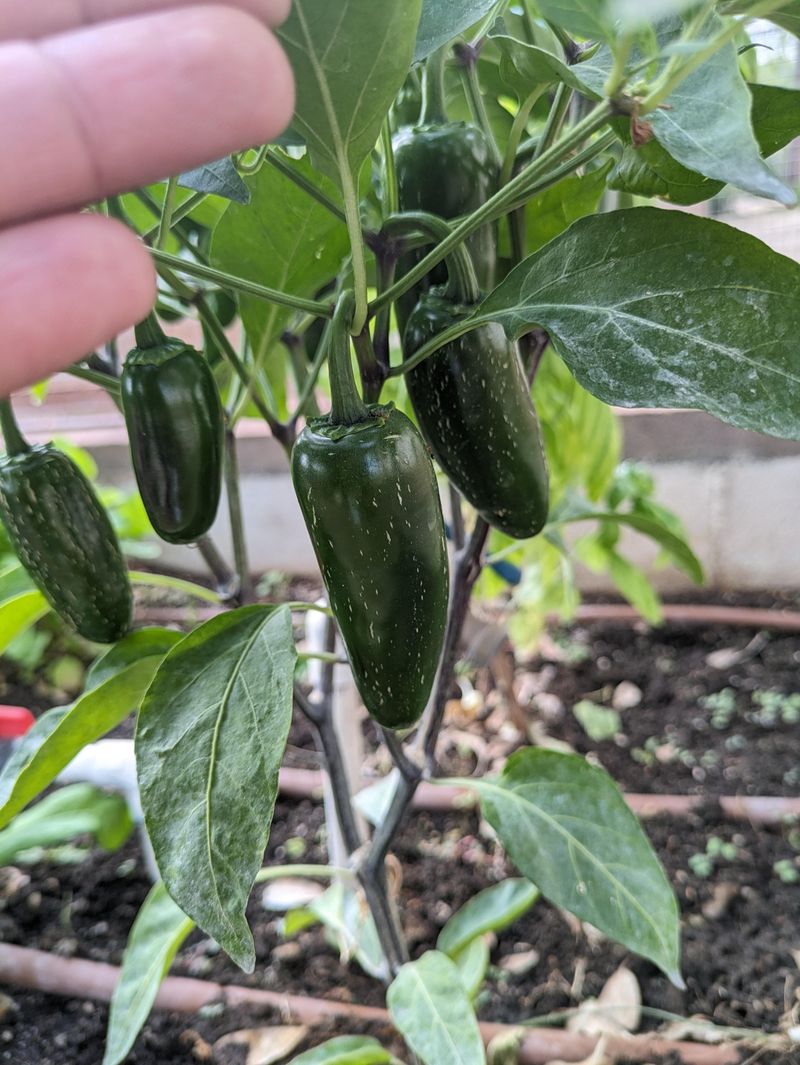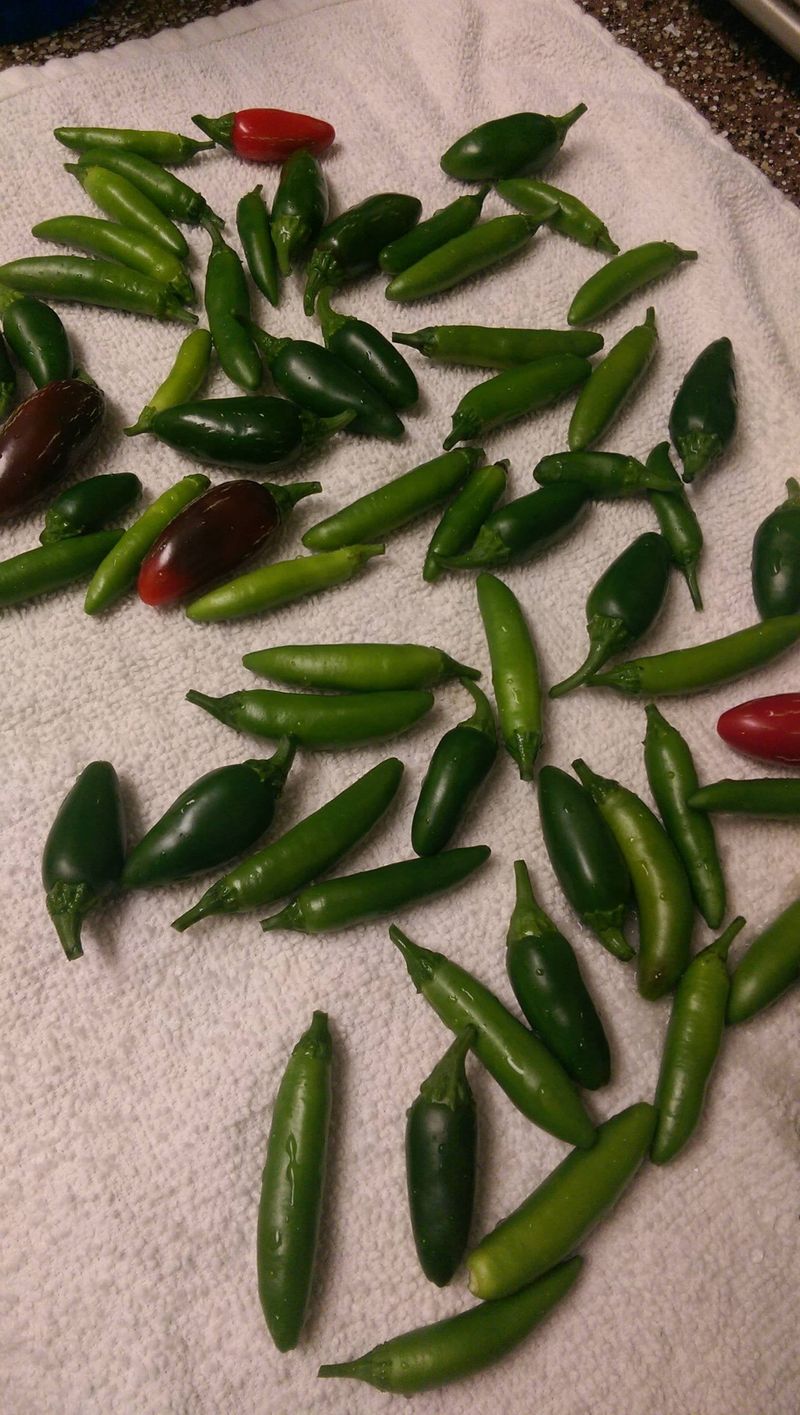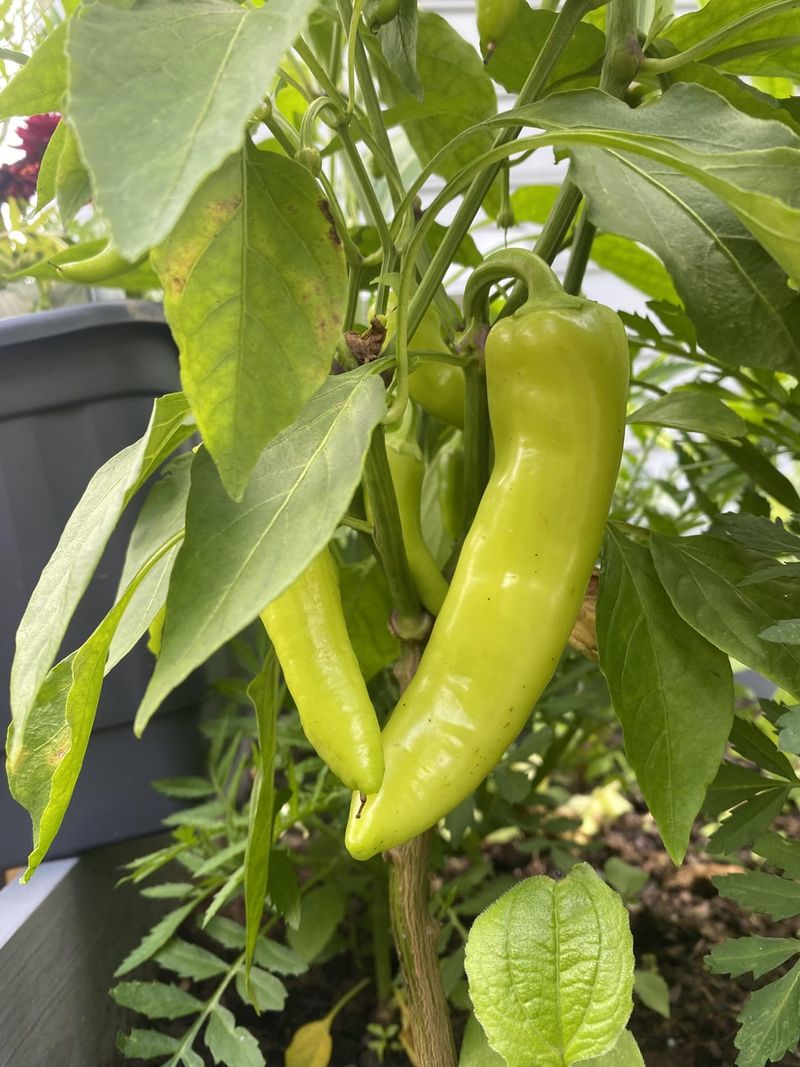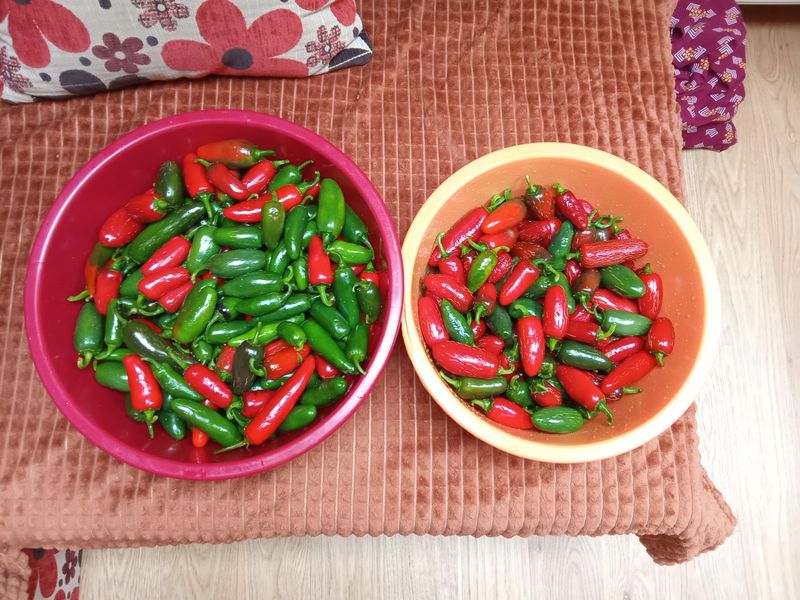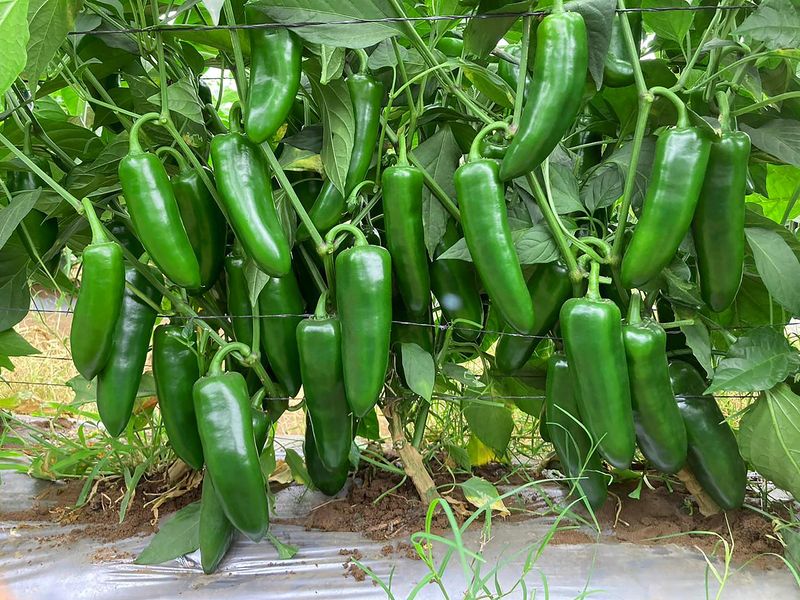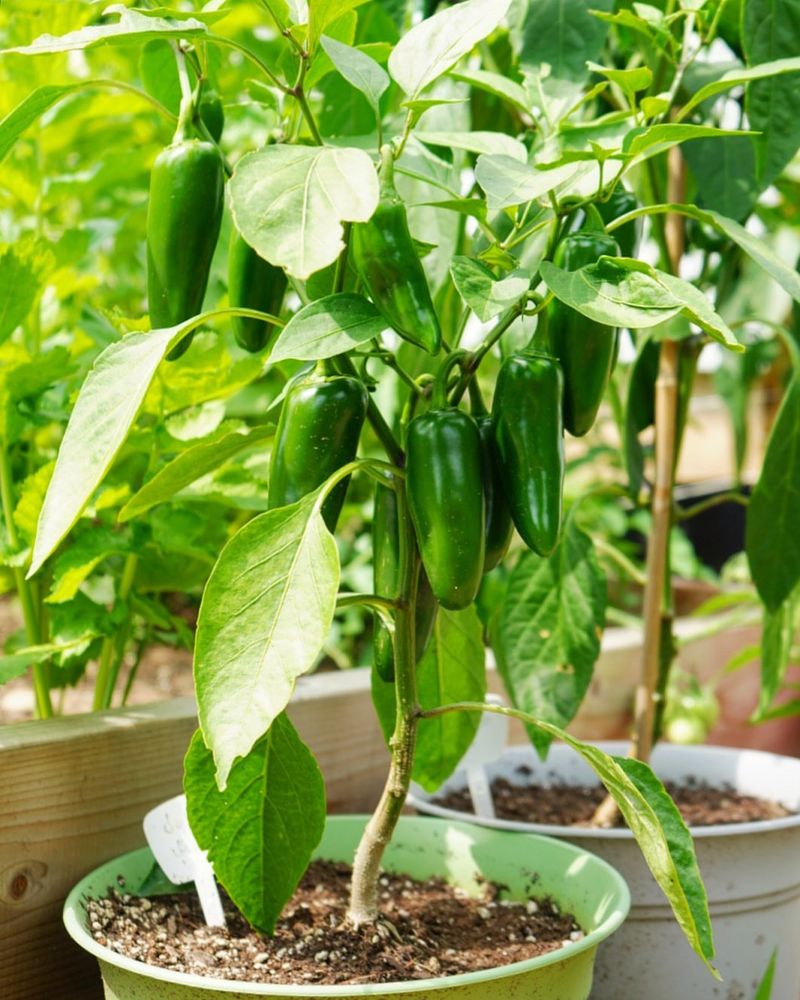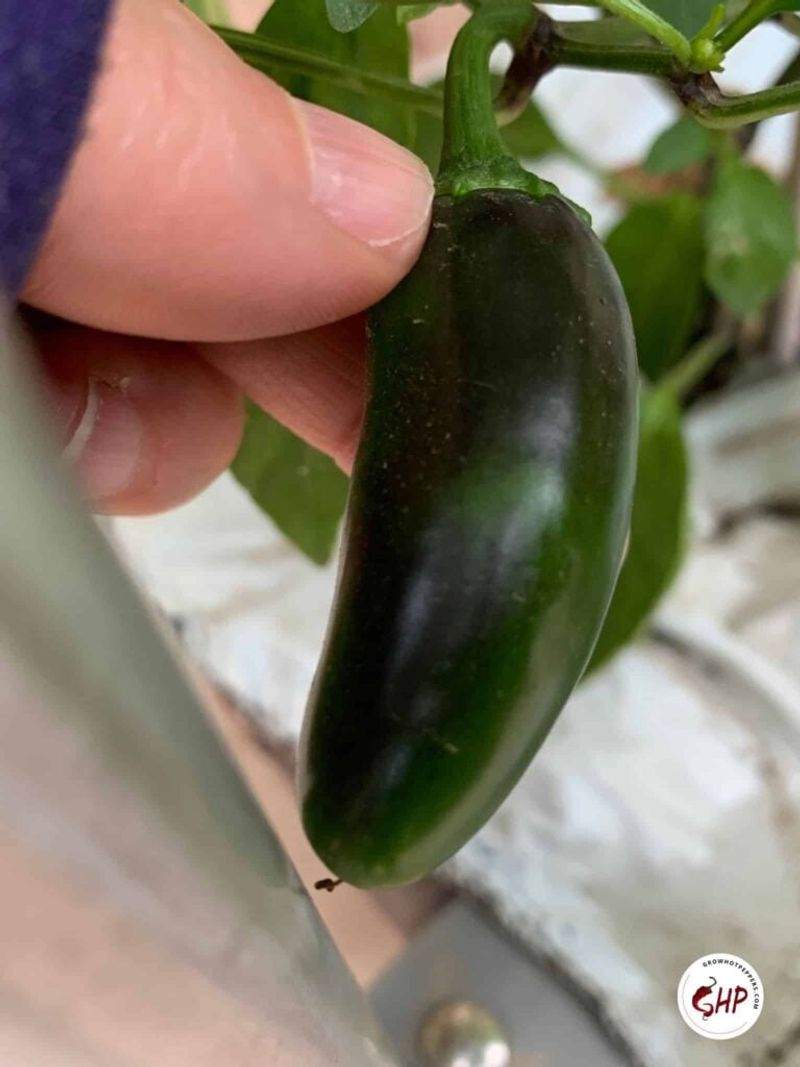Timing is everything when it comes to jalapeños. Pick too early, and you’ll miss the heat. Wait too long, and you might set your mouth on fire.
Whether you like them mild or blazing hot, these 15 easy-to-spot signs will help you harvest jalapeños at just the right time—for your perfect level of spice.
1. Size Matters—Look for 3-5 Inches
Jalapeños reach their ideal picking size when they measure between 3-5 inches long. At this length, they’ve developed their characteristic flavor while maintaining a balanced heat level.
Smaller peppers often haven’t fully developed their flavor profile yet, while overgrown ones might become too intensely hot or develop a bitter taste. Grab a ruler during your first few harvests to train your eye for the perfect size.
2. Firm Flesh Signals Readiness
Squeeze the jalapeño gently between your fingers to test its firmness. A perfectly ripe jalapeño feels solid and crisp with a slight give when pressed—similar to a ripe tomato. Avoid peppers that feel soft, mushy, or wrinkled as they’re overripe.
The firm flesh indicates the pepper has reached maturity but hasn’t started to deteriorate, giving you that perfect snap when you bite into it.
3. Color Changes Tell Spice Stories
Green jalapeños offer a milder, grassier flavor perfect for those who enjoy moderate heat. As they ripen, they transform to red, gaining sweetness along with increased capsaicin—the compound responsible for spiciness. For the mildest flavor, harvest when bright green. For medium heat, pick when dark green with black streaks beginning to appear. For maximum heat and sweetness, wait until they’ve turned completely red.
4. Corking Lines Mean Extra Spice
Those white stretch marks or lines that appear on jalapeños aren’t flaws—they’re called ‘corking’ and signal a spicier pepper! These natural cracks in the skin develop as the pepper grows quickly and stretches.
Mexican markets actually prize heavily corked jalapeños for their enhanced flavor and heat. If you want milder peppers, harvest before corking appears. For a fiery kick, wait until those white lines start showing.
5. The Snap Test Never Fails
Bend the stem of your jalapeño slightly—a ripe pepper will make a clean snapping sound when harvested. This simple test reveals the crispness of the flesh and indicates optimal maturity. Unripe peppers tend to bend without snapping, while overripe ones might break too easily.
Practice makes perfect with this technique, so don’t worry if it takes a few tries to recognize the ideal snap sound.
6. Days Since Flowering Provides Precision
Track your jalapeños from flower to fruit for precise timing. Most varieties are ready to harvest 70-85 days after planting, or about 45-60 days after flowering. Keep a garden journal to note when your plants flower. For milder jalapeños, harvest on the earlier side of this window.
For spicier peppers, wait until the later end. This scientific approach takes the guesswork out of harvesting.
7. Skin Texture Reveals Hidden Secrets
Run your fingers along the jalapeño’s surface to feel its texture. Young peppers have smooth, shiny skin that feels almost waxy. As they mature, the skin develops a slightly rougher texture with tiny bumps. The perfect picking time is when the pepper maintains its glossy appearance but has just begun developing subtle texture changes.
These texture shifts indicate the pepper is building flavor compounds while maintaining the perfect moisture balance.
8. Weight Test Indicates Inner Development
Hold a jalapeño in your palm and assess its weight. A properly developed pepper feels surprisingly heavy for its size, indicating well-developed flesh and seed cavity. Lightweight peppers often have thin walls and underdeveloped flavor.
The heaviness comes from fully formed flesh and mature seeds, both contributing to the pepper’s heat profile. Give your jalapeños a gentle bounce in your hand—the satisfying heft means they’re ready.
9. Taste Test Tiny Samples First
For brave gardeners, the ultimate ripeness test is tasting a small piece from your first harvested jalapeño. Cut a tiny slice from the bottom end (where it’s typically milder) and sample it. This direct approach lets you gauge both flavor development and heat level.
Remember that heat varies throughout the pepper—the placenta and seeds near the stem contain the most capsaicin. Wear gloves when cutting, and avoid touching your eyes!
10. Listen for the Hollow Sound
Gently tap a ripe jalapeño with your fingernail and listen carefully—mature peppers produce a slightly hollow sound. This happens because the seed cavity has fully developed inside, creating an acoustic chamber. Unripe peppers sound more solid when tapped.
Master gardeners use this subtle audio cue as one of many indicators of perfect ripeness. Combined with visual cues, this technique helps you develop a multi-sensory approach to harvesting.
11. Seed Color Indicates Maturity Stages
Cut open one test pepper and examine the seeds. Immature jalapeños have small, pale seeds that haven’t fully developed. As the pepper ripens, seeds grow larger and darker. For mild heat, harvest when seeds are cream-colored.
For medium heat, look for light tan seeds. For maximum spiciness, wait until seeds turn brown. This internal indicator provides valuable information about the pepper’s development stage.
12. Morning Harvest Maximizes Flavor
The time of day you harvest significantly impacts your jalapeños’ flavor and heat. Pick peppers in the early morning when temperatures are cool and plants are fully hydrated from overnight recovery. Morning-harvested peppers contain higher moisture levels and more aromatic compounds.
Avoid harvesting during midday heat, which can stress the peppers and diminish their flavor complexity. Your taste buds will thank you for this simple timing adjustment!
13. Wall Thickness Predicts Heat Intensity
Slice a sample jalapeño crosswise and examine its wall thickness. Thicker walls typically indicate a milder flavor profile, while thinner walls often mean more concentrated heat. This happens because capsaicin concentrates in the placenta (the white pith that holds the seeds).
Peppers with thicker flesh have a better heat-to-flesh ratio for those who enjoy moderate spiciness. For cooking purposes, thicker walls also hold up better in recipes.
14. Plant Signals Guide Your Timing
Pay attention to your jalapeño plant’s overall health and growth stage. When a plant has produced most of its peppers and growth slows down, it’s focusing energy on ripening existing fruit rather than producing new ones. This natural slowdown signals optimal harvest time.
Picking mature peppers also encourages the plant to produce more fruit. Leaving overripe jalapeños on the plant sends a signal that the plant has completed its reproductive cycle.
15. Weather Forecasts Affect Harvest Decisions
Keep an eye on upcoming weather when planning your jalapeño harvest. A cold snap can damage peppers, while excessive rain may cause splitting or dilute flavor. Harvest before heavy rain to prevent water-logging that can lead to bland taste.
Similarly, pick peppers before extreme heat waves that might stress the plant. Sudden temperature changes can trigger peppers to increase capsaicin production as a stress response.

